Vehicle-Related Pet Injuries and Death
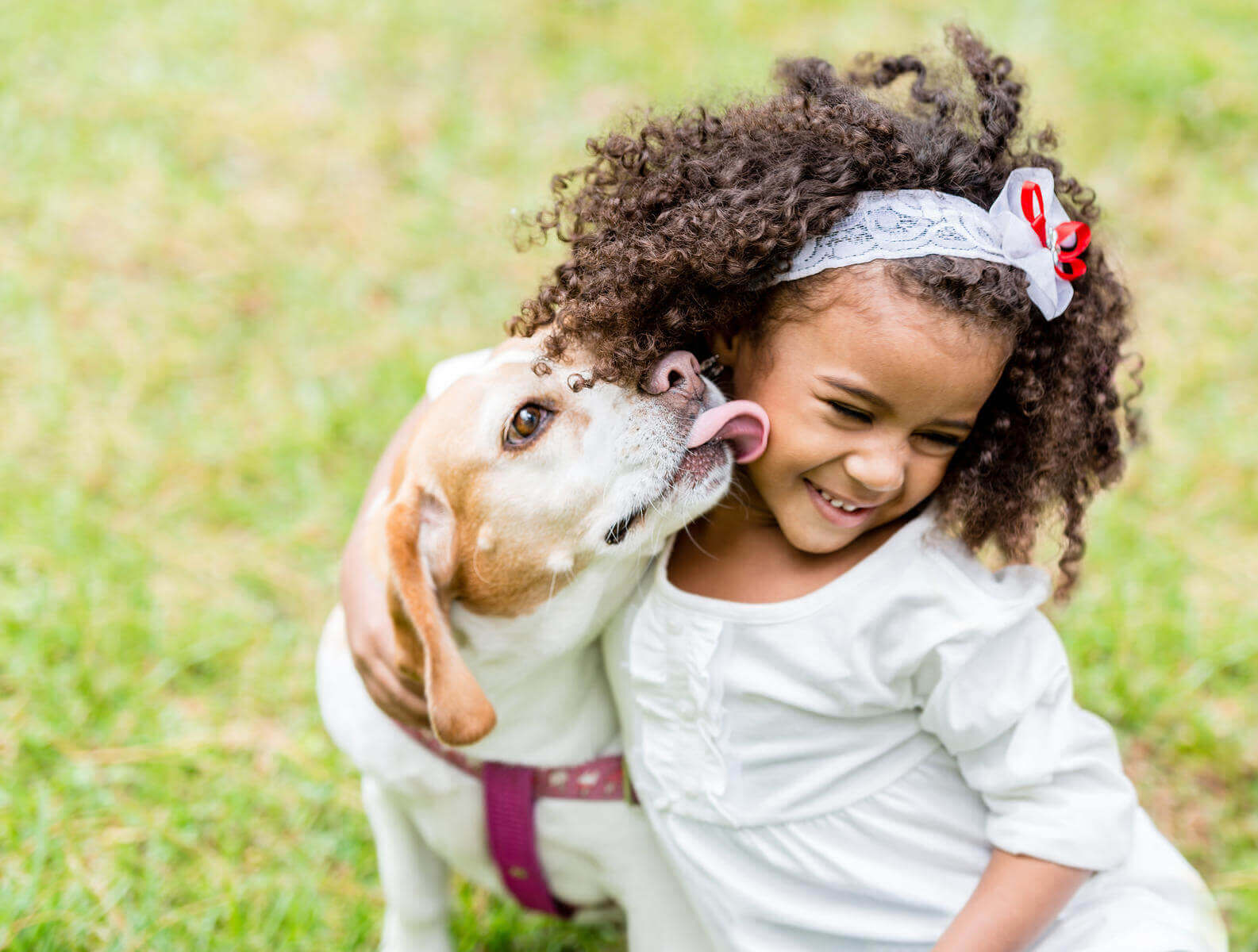 The similarities between how children and pets are injured or killed in and around vehicles is uncanny.
The similarities between how children and pets are injured or killed in and around vehicles is uncanny.
Vehicle-related injuries and death to pets can occur as a result of vehicle crashes, when a pet is hit by a car, or as a result of being left alone in a vehicle.
If you have experienced a pet injury or death in a vehicle-related incident, we want to hear about it. Currently, there is no national data collection effort in place outside of Kids and Car Safety to track how pets are harmed in and around vehicles.
Common types of incidents include, but are not limited to:
- Hit by a vehicle (dart out into roadway, run over in driveway because driver cannot see them, etc.)
- Traffic crashes (most pets ride unrestrained)
- Falls from moving vehicles (out of windows, beds of pickup trucks, etc.)
- Being left in a hot car or getting into a car and becoming trapped
- Power window strangulation or amputation
- Vehicle accidentally knocked into gear by pet
- Car stolen with pet inside
- Kidnapped from vehicle
- Carbon monoxide poisoning caused by a vehicle
- Vehicle submersion (drowning inside a vehicle)
- Trunk entrapment
Descriptions of Common Pet Injuries In and Around Cars
Heatstroke occurs when animals are trapped inside vehicles. This can happen even on mild days when the outside temperature is as low as 60 degrees Fahrenheit. The inside of a vehicle can heat up to deadly temperatures within minutes, even with the windows cracked. Dogs are especially susceptible to heatstroke because they do not regulate their body temperature well and can only sweat through their paws.
Even the best pet parents can unknowingly leave a pet in their vehicle; this oftentimes leads to injury and/or death. Animals have also been known to sneak into vehicles on their own and become trapped without their owner realizing that they are in there, especially curious cats.
- Never leave a pet alone in a vehicle, not even for a minute.
- Use drive thrus, curbside pickup or shop pet friendly stores instead
- Do not take pets with you to run errands where you have to leave them in the car.
- Cracking the windows does not lower the max temperature reached inside a vehicle.
Signs a Pet May Be Overheated:
Bright red gums, lost balance or consciousness, diarrhea, excessive panting, lethargy, rapid heart rate, slow response time, temperature over 104 degrees.
If you suspect that your pet may be overheated:
Take them to a veterinarian immediately. You can help cool your pet down while en route to the vet by placing a wet towel over their body, offering them cool water to drink, and placing them in front of a fan or air-conditioning vent (or placing them in the shade if outside).
Backovers and Frontovers occur when a vehicle is backing out or pulling into a driveway or parking space. These accidents happen because a driver cannot see the pet in the blindzones that exists in front, on the side and behind every vehicle, especially larger trucks and SUVs.
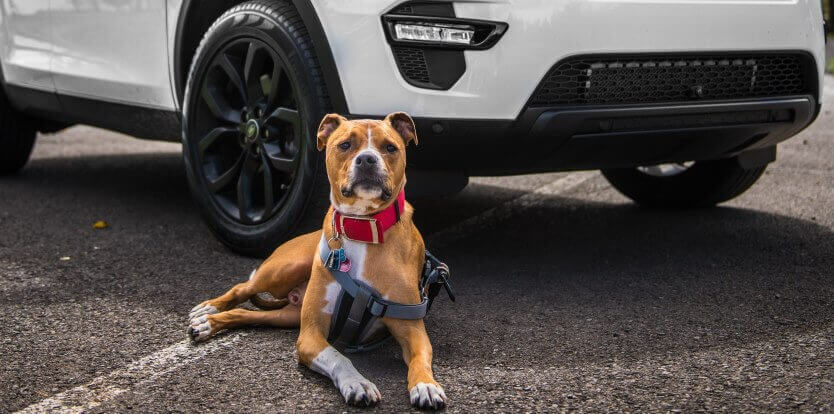 Install a backup camera on your vehicle if you don’t have one (Thanks to Kids and Car Safety’s tireless work, all new vehicles now come with a backup camera as standard equipment starting with model year 2018 vehicles)
Install a backup camera on your vehicle if you don’t have one (Thanks to Kids and Car Safety’s tireless work, all new vehicles now come with a backup camera as standard equipment starting with model year 2018 vehicles)- Always make sure pets are actively restrained whenever vehicles are near
- Ensure gates and fences are properly locked so pets cannot get out.
Car theft occurs when a vehicle is left running with the animal inside. These events occur frequently, all across the country. Further, animals can be kidnapped from vehicles when left unattended.
- NEVER leave your pet alone in the vehicle, not even for a minute.
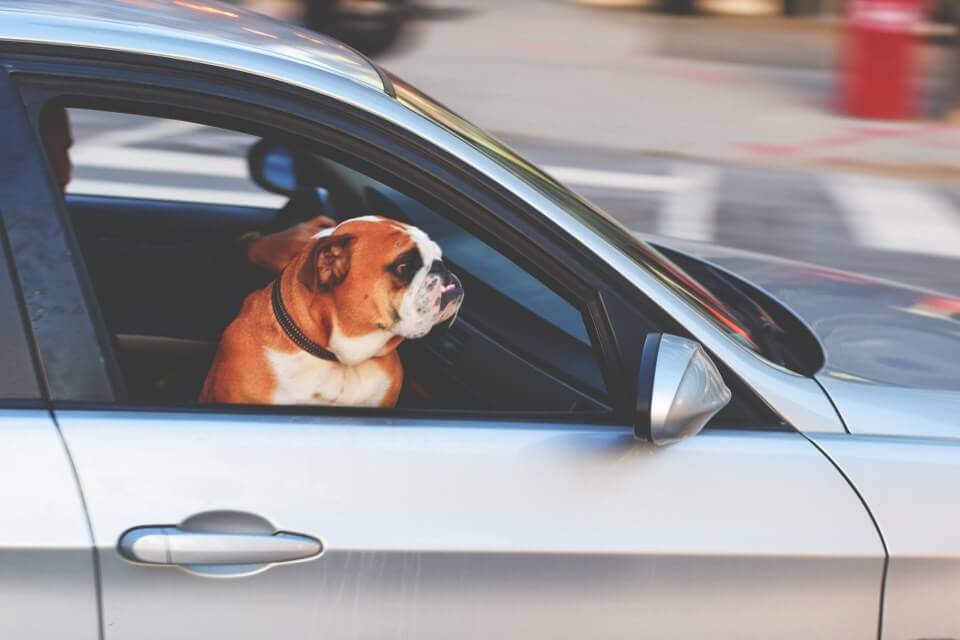
Falls from Vehicles: Animals riding in the bed of a pickup truck can jump or fall, causing them to be struck by another vehicle traveling in the roadway. Animals may also fall from an open window if leaning out of the vehicle.
- Do not allow pets to ride on the bed of a pickup truck
- Do not allow pets to hang their head out the window while driving
Power windows have an average upward force ranging from 30-80 pounds and can easily suffocate, injure, or kill an animal. Many times, animals roll the windows up on themselves or the owner does not realize the animal's head was out the window.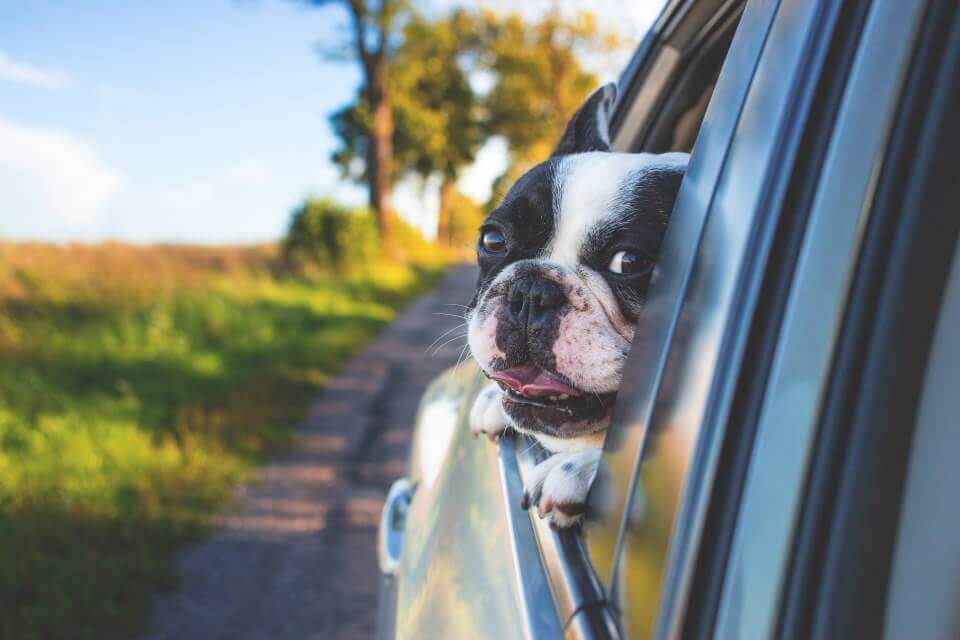
- Do not allow pets to hang their head out the window while driving
- Always make sure all passengers have hands, heads, noses and paws inside the vehicle before rolling up any windows
- Engage the window locks at all times
Vehicle Submersion (drowning inside a vehicle) can occur when a vehicle enters a body of water and a pet is trapped inside. This type of incident usually takes place during flash floods, when a vehicle is accidentally knocked into motion, or when a vehicle crashes into a body of water.
- Never drive through even a small amount of water on the road. It only takes 6 inches of water to sweep away an entire vehicle.
- If your vehicle becomes submerged follow the SWOC safety instructions as you only have about 1 minute to escape before the water pressure becomes too great to get out.
- Seat belts off
- Window down
- Out the window
- Children first
Roadway Dangers: When an animal suddenly darts out into the street, drivers are unable to stop in time to avoid injury. Intersections pose a risk for animals, as many drivers do not anticipate that they will be on the road. Even when drivers take special precautions at intersections, animals are oftentimes unable to be seen, leading to them being struck by a vehicle.
The perils of distracted driving: Pets and children can be a major distraction on the road. According to the Center for Disease Control (CDC) distracted driving cause 25 to 30 percent of police-reported traffic crashes, which add up to roughly 1.2 million crashes each year. In addition, the National Highway Traffic Administration, or NHTSA, notes that roughly 20 percent of car accident injuries involve distracted driving.
There are multiple ways an animal can be injured in a roadway or highway crash. Most pets ride unrestrained in vehicles and can become a projectile in the event of a crash risking injury to the pet and human passengers in the vehicle. A 10-pound dog in a 50-mile-an- hour car crash exerts 500 pounds of force. Meanwhile, an 80-pound dog in a 30-mile-per-hour crash exerts 2,400 pounds of force.
Some animals become so frightened after a crash that they run away from the scene and are lost. In other instances, they run into traffic and are hit. Pets can also become aggressive after a crash due to fear and injury.
- Pets should always be restrained in a back seat to prevent them from injury if an airbag is deployed.
- If you cannot restrain your pet with a reputable, tested car restraint, the next safest
option is to place your pet in the footwell behind the front seat. - Smaller pets are safer when fully contained in a restrained carrier, while larger dogs should ride in a car safety harness that does not connect the pet with an extension
tether. - Pets should be unable to slide forward far enough to “submarine,” or drop off the seat, at any point during a collision. Restraining pets may feel restrictive, but it’s the best way to ensure you and your pets have happy, distraction-free travels during summer, and all year round.
Carbon monoxide is an odorless gas that is produced when gas, coal, or oil burns. Vehicle exhaust is a common source of carbon monoxide and vehicles left running inside of an enclosed space (such as a garage) or a blocked tailpipe can cause carbon monoxide gas to build up quickly. Carbon monoxide (CO) poisoning occurs when too much of this gas builds up in the bloodstream. Symptoms of CO poisoning include vomiting, weakness, seizures, coma, and death. Birds are especially sensitive to CO.
Vehicle Knocked into Gear by a Pet: Animals that are left alone in vehicles can accidentally set them into motion. Many vehicles can be shifted into gear without a foot on the brake. The keys do not always have to be in the ignition for this to happen.
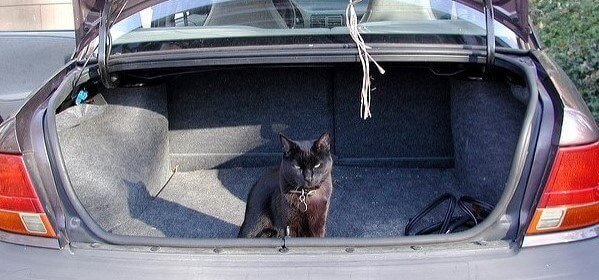 Trunk Entrapment: Animals might find the trunk to be a nice hiding place, but they do not understand that they can become trapped and suffer from heatstroke before anyone finds them.
Trunk Entrapment: Animals might find the trunk to be a nice hiding place, but they do not understand that they can become trapped and suffer from heatstroke before anyone finds them.

